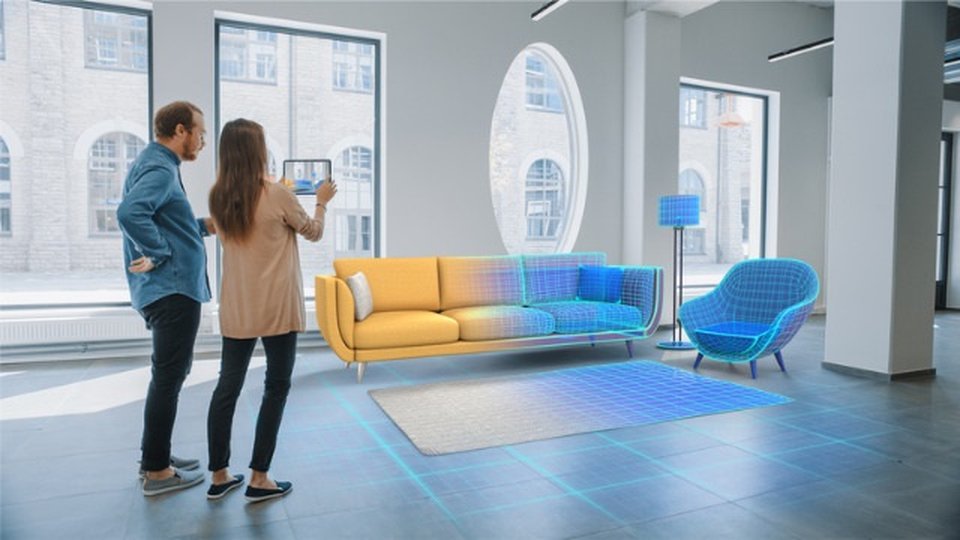Technology
3D, AR can hurdle long-standing e-commerce challenges, help retailers maintain momentum
Rob Weaver, chief revenue officer at Vertebrae, shares insight on survey results that suggest consumers still find the e-commerce experience frustrating. If they want to achieve continued growth, merchants must work harder to overcome shoppers’ doubts.

September 25, 2020 by Rob Weaver
As we head into the crucial holiday season, Vertebrae's recent consumer survey of more than 1,000 U.S. consumers found that the Web will remain a leading touchpoint for brands, as nearly 1 in 2 respondents (47.5%) do not feel safe shopping in stores. Close to two-thirds, 74%, said they now shop online at least weekly, with a third (34%) doing so at least once a day.
Furthermore, those who do visit brick-and-mortar locations report altering their behavior to reduce risk of transmission of COVID-19. In addition to minimizing contact at the point of sale, nearly 4 in 10 respondents said they practice no-touch browsing: 38% won't try on apparel or accessories or test makeup, while 37% avoid touching merchandise unless they're going to buy it.
These findings suggest that for the foreseeable future, store visits are likely to be purposeful and on-task, as opposed to leisurely browsing for inspiration — putting even more pressure on the Web to deliver engaging experiences that lead to unexpected finds and that encourage experimentation with new products or brands.
Web experiences continue to underwhelm
When it comes to replacing the in-person shopping experience, however, eCommerce continues to struggle -- as it has since its earliest days. Survey respondents confirmed that the top inhibitors to buying online remain the same as ever: the inability to touch and try items outranked even shipping costs as a purchase hurdle.
Close to 6 in 10 respondents (59%) said they hesitate to buy online because they don't know whether items will fit, while 58% miss not being able to touch or feel products. More than half, 56%, say they don't know whether the item that's delivered will look the same as advertised online.
Immersive commerce capabilities top list of desired improvements
Given the strong desire for tactile and spatial cues about products, it's no surprise that survey respondents picked features that enable closer inspection or offer real-life context about size and fit as the top enhancement merchants could offer to convince them to buy online.
The ability to spin, flip, or zoom in on product details was the most-sought-after online feature, with 63% saying it would boost confidence in buying online. The ability to gauge real-life size and scale was also deemed crucial; 57% said they wanted to be able to virtually place items like furniture or appliances in their physical spaces. Virtual try-on features were also popular, with close to 4 in 10 (39%) of respondents saying they would help boost confidence -- a 48% increase since 2018.
All of these picks ranked higher in the survey than popular features like user-generated ratings and reviews (31%) or personalized recommendations (15%), suggesting that shoppers are hungry for new experiences that closely approximate in-store shopping.
Awareness and use of 3D and AR at all-time high — and not just in apps
Merchants seeking to deliver the rich, immersive experiences shoppers value most should prioritize development of 3D and AR product assets for use in a variety of online formats.
Thanks to mobile tech advances, AR and 3D experiences are now easily accessible. The survey found that more than 7 in 10 consumers are aware of AR, up 14% from 2018. That percentage approaches 8 in 10 for the youngest cohort of shoppers, ages 18-29, 78% of whom say they're familiar with AR.
Moreover, the percentage of respondents who've experienced AR while shopping has nearly doubled, from 20% in 2018 to 38% -- an increase of 92%. Two-thirds of these shoppers (68%) say they are likely or very likely to buy from retailers offering AR, and more than three quarters of those who've tried it say AR shopping boosts confidence in purchasing items without touching or trying them.
Thanks to this growing awareness and use of AR, consumers are more eager than ever to see AR deployed widely. In addition to wanting to access AR via mobile apps, 4 in 10 say they want to access AR experiences directly on the Web without an app download and the same number wants to see AR on social platforms such as Instagram.
Another 1 in 5 want AR to display within Google search results — a phenomenon many experienced this spring when virtual wild animals could be summoned into locked-down living rooms via the search engine. Merchants who develop 3D and AR assets for maximum portability can potentially gain visibility and engagement across touchpoints for the holidays and beyond.
Conclusion: Immersive experiences fill crucial online gaps
While the rocketing growth of eCommerce has helped retailers survive a challenging year, maintaining momentum in Web sales will require new online experiences that address long-standing barriers to purchase. With awareness and acceptance of 3D and AR widening rapidly, sellers who can harness immersive commerce to deliver detailed, context-aware product experiences can realize continued growth through the holidays and beyond. In an era where online shopping is ubiquitous, how will you differentiate your offering to customers?
Rob Weaver is chief revenue officer at Vertebrae.





